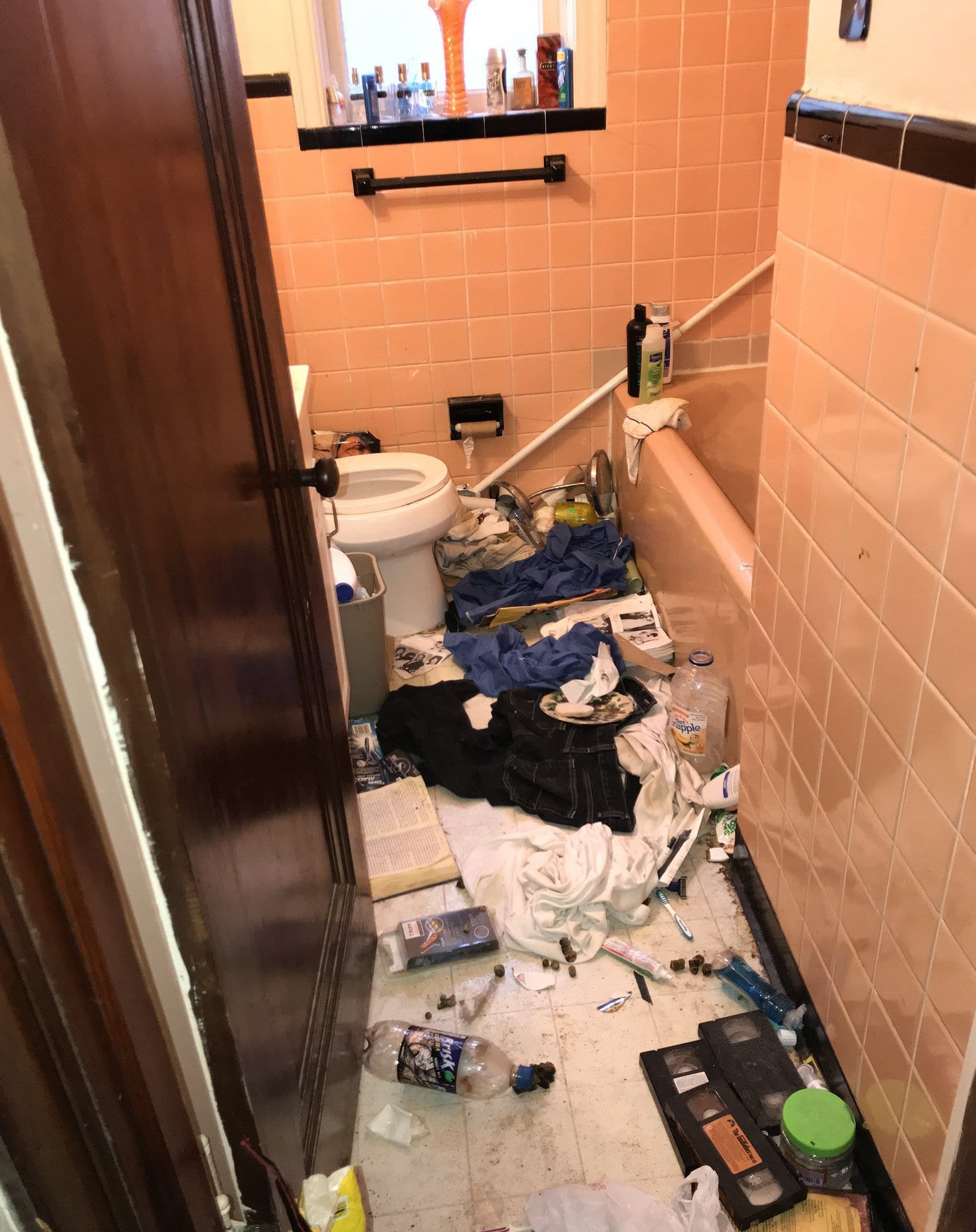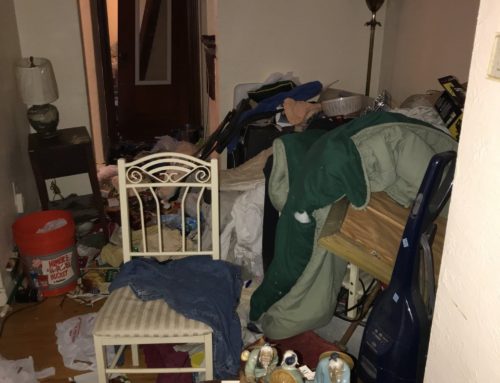It’s nice to be able to shop and buy things, but when does it become too much? Some people live in homes that are filled with random things that never get used. They save haphazard items that they deem important and store them in places that can lead to unsafe conditions.
Too much stuff can cause people to squeeze through hallways, trip over random items, no longer use certain rooms, and even struggle to open or shut closet doors due to the clutter that is packed behind them. People dealing with hoarding disorder have a problem with getting rid of their possessions. This leads to too much clutter that can disrupt a productive way of living.
The Difference Between Hoarding and Clutter
To those unfamiliar with the hoarding condition, there may be a fine line between what is considered hoarding and what is considered simply clutter. Those who have clutter in their home may not have the time or physical ability to straighten it up; whereas, a hoarder’s state of mind plays a huge part in their condition.
Clutter
Many homes experience various stages of clutter. It can start as simple piles of junk mail, books, or dirty laundry. If your household is busy, it may be harder for you to properly sort and organize your possessions. Cluttered homes usually don’t have stuff blocking the doors, stairways, or entrances. Cleaning up clutter is usually accomplished with organization, time, energy, and patience.
You can follow a simple process to organize and rid your home of clutter so you can reclaim your living spaces. Keepsakes or collectibles are restored and returned to their proper place in the home. Usable but unwanted items can be sold or donated. Garbage and recyclables are properly and safely disposed of and removed from the property.
Hoarding
Hoarding is the compulsive need to find and keep objects, animals, or trash regardless of their value. Hoarding can range from large piles and mounds of items taking up entire rooms or living spaces to animal hoarding. Hoarding differs from the clutter in part due to the sheer size of the mess.
Hoarders tend to struggle with a mental condition that manifests itself into hoarding. Keeping items like food, garbage, waste, and electronics can pose serious threats to the home’s inhabitants. There are various layers of a hoarding condition, creating distinct separations between cluttering and someone struggling with hoarding.
Level 1: Only small amounts of clutter are visible and no odors are present.
Level 2: The premises has noticeable odors and waste. It involves additional clutter around the residence, specifically in two or more rooms, and in narrowed pathways through the home. Other characteristics include:
- Light pet odor
- Pet waste on the floor
- At least three incidents of feces in a litter box
- Evidence of household rodents
- Overflowing garbage cans
- Dirty food preparation surfaces
Level 3: Visible clutter outside the home with light structural damage. Animal tanks and cages are neglected. There is visible and audible rodent evidence, fleas, and spider webs. Other characteristics include:
- Small amounts of hazardous substances on the floors
- Excessive dust
- Dirty clothes, towels, and sheets
- Overflowing garbage cans
- Odors throughout the house
Level 4: Noticeable mold and mildew throughout the home. Structural damage that is at least six months old along with odors and sewage buildup. Other signs include:
- Aged canned goods
- No clean dishes or utensils
- Beds with lice, or other bugs, and no sheets or covers
- Flammable substances stored in the living room
Level 5: Involves fire hazards, rotting food, and too many pets. There may be broken walls, no electricity or running water, fire hazards, and rodents. Other signs include:
- Clutter filling bathrooms and kitchen
- Noticeable human feces
- Rotting food on surfaces and inside a non-working refrigerator
Consequences of Hoarding
Hoarding can have severe consequences for not only the individual but also their loved ones. Financial strain due to excessive shopping is one of the most common consequences of hoarding. Other effects include strained relationships and possible loss of housing due to eviction.
Structural damage often occurs in hoarding situations, either due to neglect or the presence of rodents. Depending on how extreme a person’s hoarding is, the behavior can impact their physical or emotional health, relationships, financial and legal stability, and professional aspirations. Hoarding can also lead to substance abuse.
Get the Professional Help You Need
Deep cleaning and sanitation are necessary to safely complete hoarding cleanup projects and to return the home to a livable state. The process requires discretion and compassion, as it is very stressful for the hoarder.
PureOne St. Louis has years of experience working with hoarding situations. Contact us immediately if you or a loved one needs help cleaning your home.


